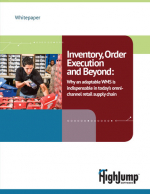The Next Generation of the Supply Chain Elite: 4PL Providers
Both shipper and logistics service providers want to stay ahead of the game and keep up with the rapidly evolving digital communications and data trends - the 4PL model offers a mechanism for achieving these goals.
Introduction
The time has come for the next generation of supply chain executors that will enable 3PL providers and shippers to strengthen their partnerships.
According to a 2013 Third Party Logistics Study, only 86 percent of shippers view their relationship with their 3PL as successful as compared to 94 percent of 3PLs. While this is an increase over previous years and shippers “credit the improvement to the 3PLs with finding new and effective ways to improve logistics effectiveness,” the discrepancy opens up an opportunity for leading 3PLs to further improve their operations by supporting more innovative technology.
By moving beyond the tactical and into strategic activities, both 3PL providers and shippers can reap great benefits. In order to drive innovation and cutting edge technology solutions, shippers are willing to gain-share with 3PLs for
investments required to achieve greater performance.
A key way for 3PLs to move into the high performance achievement echelon of the industry is through establishing partnerships that leverage a Fourth Party Logistics (4PL) model. This 4PL, also known as a Lead Logistics Provider model, will be the catalyst for the evolution to more collaborative and innovative partnerships that will positively impact 3PL and shipper relationships greatly.
Global economic conditions are causing shippers to rebalance their supply chains to become more adaptable and flexible due to frequently changing sourcing locations.
Under the 4PL model, the shipper engages a provider to serve as its primary outsourcing liaison. The shipper shares their supply chain goals and challenges with the 4PL while maintaining an ongoing, strategic dialog with this partner. The 4PL is responsible for coordinating the activities of all 3PL providers in the shipper’s network and ensuring that each is accomplishing its goals and conforming to the requirements of the shared customer.
The 4PL delivers the shipper with a singular view of the critical aspects of the supply chain including, inventory, orders, and shipments. The increased congruency and communication streamlines the outsourcing process and improves the shipper’s view of its relationships with 3PLs while leveraging the expertise that 3PLs have accrued in the industry. Evidence supports this pattern; “58 percent of shippers are reducing or consolidating the number of 3PLs they use.”
How does a 3PL become a 4PL?
In order to become a 4PL and join the supply chain elite, the right pieces must be in place to ensure success. As worldwide communication and information flows accelerate at an exponential rate, logistics providers must be equipped with up to date data capturing tools and technology solutions.
These technology solutions enable logistics providers to collect the most accurate, real-time data for their customers, thus granting an advantage that propels them into the evolving communication age. By focusing on leveraging the right technology and taking a collaborative approach to the 3PL and shipper partnership, a logistics provider can utilize their best practices to the fullest extent to become a 4PL.
What’s Related




Favorites





